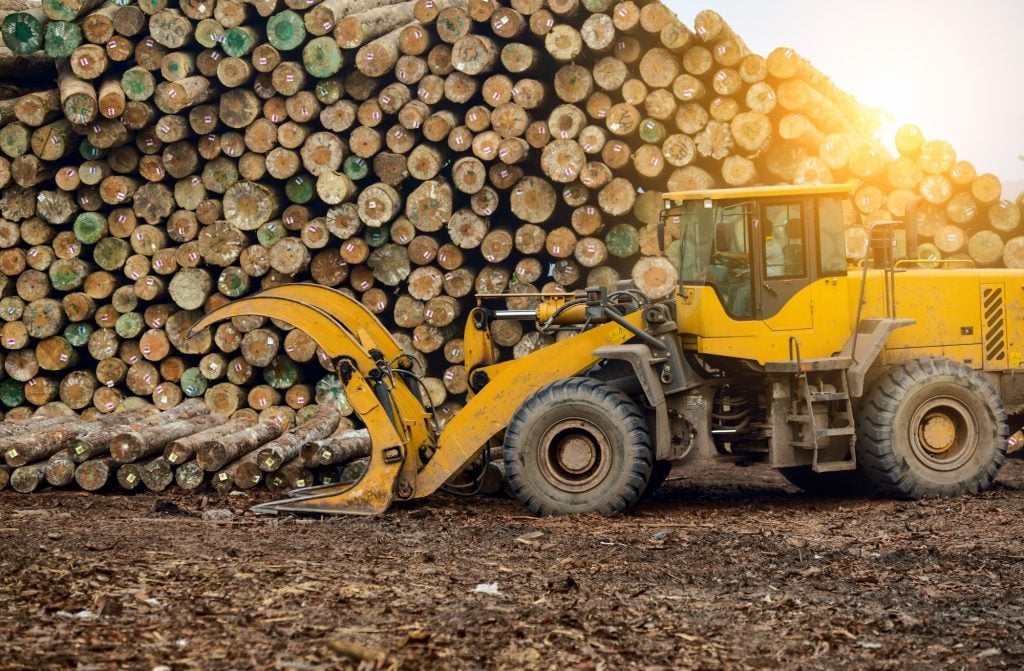Lumber prices have dropped like a stone in recent weeks following months of record highs, but builders are still waiting to see the benefits of that fall. Meanwhile, new home prices keep on rising.

The high price of lumber has long been cited as one of the main factors driving up home prices over the last year, and also the reason why there aren’t enough new homes to meet demand. However, lumber prices have fallen by around 50% in the last seven weeks, leading to hopes that the cost of a new home would also decline.
But that hasn’t happened as builders say they are still paying much higher prices for their lumber.
Writing in the National Association of Home Builder’s Eye on Housing blog this week, NAHB economist David Logan explained that this disconnect has always been present in the lumber supply chain, and that it will take time for lower costs to reach builders.
“As the price declines began grabbing headlines, the price of lumber packages quoted to builders held at record highs,” Logan wrote. “This dynamic is primarily due to dealers’ inventory carrying costs and potentially large differences between the price at which inventory is bought and sold.”
Logan explained that there are five stages in the lumber supply chain. It all starts at the forest, then moves to the sawmill. From there it goes to the wholesaler, who transfers it to the retailer, and then, finally the end user (builders).
In order to ensure their profit margins are healthy, the retailers and wholesalers will always attempt to buy their lumber at low prices and sell it higher, but Logan explains that it’s a delicate balancing act that’s fraught with risk in the current environment when prices are rapidly falling. For instance, if a lumberyard quoted a client at the market price two weeks ago, and then only delivered on that order today, it would be selling at a 25% loss relative to current prices. Therefore, suppliers that quote market prices will lose money when the value of lumber is trending down, Logan said.
Another factor is that supplier inventories are usually tighter during times when prices are heading downwards, the economist explained. That’s because the inventory they do have was expensive compared to the current market price. So the wholesaler and retailer both have an incentive to sell their entire stock while they can still get a price that’s close to what they paid for it, without upsetting their customers too much, he said.
“And for reasons stated above, they will be “trigger shy” to buy more lumber than they are contractually obligated to provide to customers for fear of ending up with a load of inventory on which they will take a loss,” Logan continued.
As for when builders will finally see some price relief, that’s hard to say. Logan said builders will only get quoted cheaper prices once the cost of lumber has decreased for an extended period of time, or if the price stabilizes. Large price decreases by themselves are not sufficient, because they must fall for a long enough period of time to lower the supplier’s average costs following the earlier price run up. Otherwise, the wholesalers will deem it too risky to sell at a reduced price.
“Depending on the rate and consistency of price decreases and whether prices have stabilized at the lower level, it may take a few weeks to a couple of months for builders to see price relief on the order initially reported in the futures or cash markets,” Logan said.
Other factors come into play too. For example, the bigger construction firms that order larger quantities of lumber will undoubtedly see reduced prices first. The personal relationships between builders and suppliers can also a factor, Logan said.
“Home building is an industry that is highly dependent upon relationships both with customers as well as vendors,” Logan continued. “The length and quality of a builder-vendor relationship can positively affect how soon the builder is quoted lower lumber prices.”
While builders say they’re waiting patietly to be offered those lower lumber prices, the cost of a new home continues to rise. At the end of May, the median price for a newly built home hit $374,400, up 18% from one year ago.
This things doesn’t happen when they pay higher price as they increase directly their price on the previous cheaper one they bought.
Anyway, the one that really pay for that is like everything, the final little human who need it.